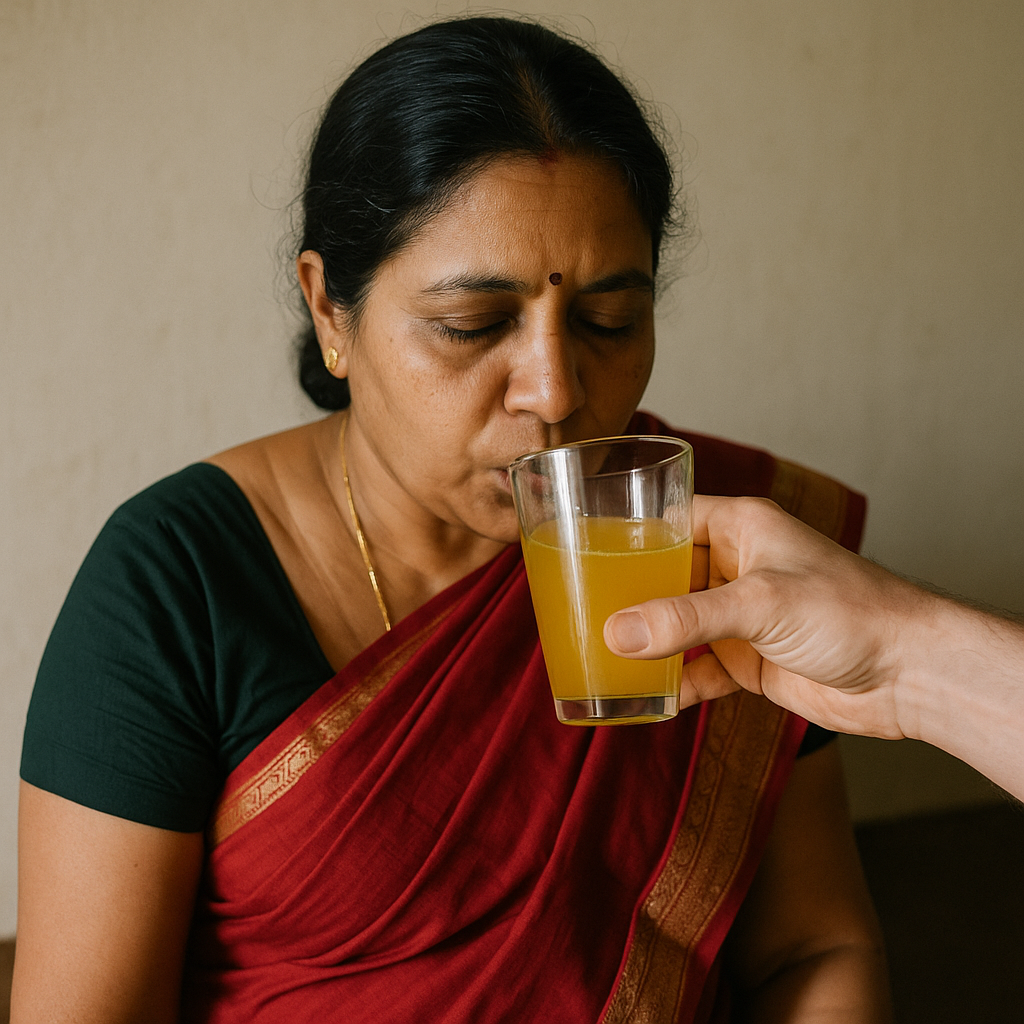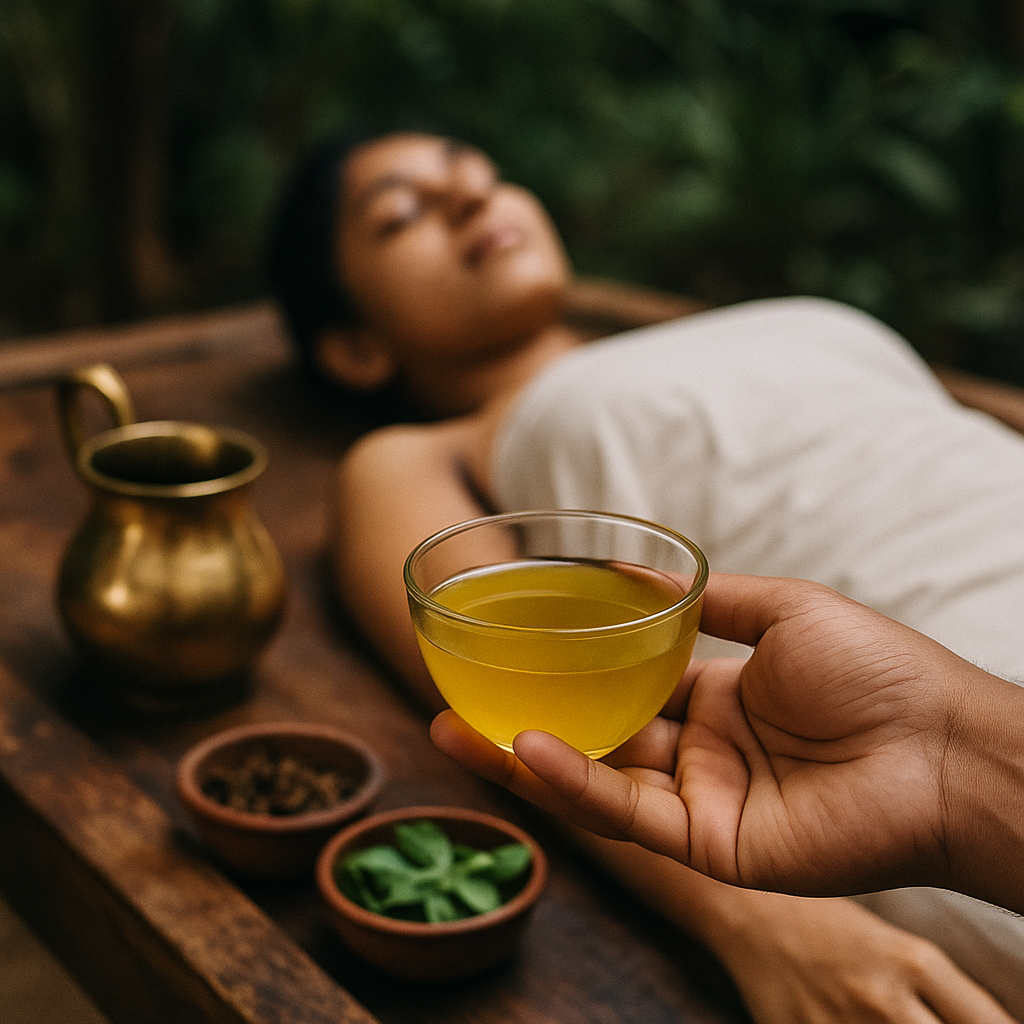Ask Ayurvedic doctor a question and get a consultation online on the problem of your concern in a free or paid mode. More than 2,000 experienced doctors work and wait for your questions on our site and help users to solve their health problems every day.
Shop Now in Our Store
What Is Snehapana in Ayurveda?

When people ask, what is Snehapana in Ayurveda, the answer often goes beyond just a simple definition. It is a specialized therapy, deeply rooted in ancient Ayurvedic wisdom, and considered one of the most essential preparatory steps in Panchakarma. The snehapana procedure involves the internal consumption of ghee (clarified butter) or medicated oils in carefully measured doses. This practice may sound unusual at first glance, but in reality, it has been a cornerstone of detoxification and healing for thousands of years. The snehapana meaning itself reveals layers of philosophy and practice that guide how toxins are removed from the body and how balance is restored in both mind and physiology. If you’ve ever wondered about the snehapana benefits, or even possible side effects of snehapana, this guide will walk you through everything—from history, meaning, and step-by-step process, to its place in Ayurvedic treatments today.
Snehapana Meaning and Role in Ayurveda
What Does “Snehapana” Mean?
The term Snehapana is formed from two Sanskrit words: Sneha, meaning oil or fat (often connected to love and unction as well), and Pana, which means drinking or ingestion. So, the snehapana meaning is literally “the oral intake of ghee or oil.” In Ayurveda, fats are not viewed only as food but as carriers of medicinal properties. When infused with herbs, ghee or oil transforms into a therapeutic medium capable of penetrating tissues and drawing out deep-seated toxins.
Where It Fits in Panchakarma
Ayurveda describes Panchakarma as five main detoxification and rejuvenation processes. Before these intensive cleansing therapies can happen, the body must be properly prepared. That’s where snehapana treatment comes in. It is one of the primary steps of Purvakarma (preparatory phase). By softening and loosening toxins (called ama) stuck in the body’s channels, snehapana makes sure the elimination therapies—like Vamana (therapeutic vomiting) or Virechana (purgation)—work more smoothly. Without this oily preparation, the actual Panchakarma might feel harsher, less effective, or even unsafe in some cases.

Snehapana Procedure: Step-by-Step Process
Preparation Phase (Purvakarma)
Before starting the snehapana procedure, a Vaidya (Ayurvedic physician) evaluates the patient’s constitution (prakriti), digestive strength (agni), and health condition. Light, easily digestible food is usually advised a day before. The practitioner ensures the stomach and intestines are ready for fat intake, otherwise, discomfort could follow. It’s not a “one-size-fit-all” process, which is important to remember.
Types of Medicated Ghee or Oils Used
The substance used in snehapana ayurvedic treatment can vary. Some people may take plain ghee, while others receive medicated ghee prepared with herbs like Triphala, Dashamoola, or Pippali. Oils such as sesame oil may also be used in certain conditions. The choice depends on the ailment being treated—digestive problems, joint stiffness, or even skin diseases.
Dosage and Duration
Dosage is highly personalized. Some patients might begin with as little as 30 ml of ghee, gradually increasing daily until their body shows signs of proper oleation (like softened stools, slight oiliness on skin, or improved digestion). The snehapana experience can last anywhere from 3 to 7 days, depending on the response. Duration is important—too short and it won’t prepare the body fully, too long and it may cause heaviness, nausea or bloating.
Snehapana Benefits for Body and Mind
Improved Digestion and Toxin Elimination
One of the key snehapana benefits is improved digestion and elimination. By lubricating the digestive tract, it allows toxins to detach from tissues and move towards the gastrointestinal system, ready for expulsion. Many patients report lighter bodies and better bowel movements after even a few days.
Calming the Nervous System
Interestingly, the practice doesn’t just target the gut. Consuming medicated ghee nourishes the nervous system and helps calm stress. Some people describe their snehapana experience as strangely grounding, like their mind feels quieter and less restless, even if the taste of ghee itself can be off-putting at first.
Skin and Joint Health Support
Because fats play a key role in tissue repair, snehapana treatment is often linked with improved skin glow and joint mobility. Dryness, cracking, and stiffness tend to reduce when the body is well-oiled from within. Many Ayurvedic texts emphasize that ghee “sneaks” into the deepest layers of tissues, carrying herbal potency along the way.

Snehapana Ayurvedic Treatment in Practice
Who Can Take Snehapana and When
Not everyone is suited for snehapana ayurvedic treatment, and that’s actually part of why it remains so effective. A qualified practitioner assesses the right timing, season, and the patient’s current state of health. Traditionally, snehapana is recommended for individuals preparing for Panchakarma or for those suffering from chronic issues like arthritis, skin disorders, digestive disturbances, or nervous system imbalances.
Timing matters. Ayurveda often prescribes this therapy at the change of seasons, especially before monsoon and winter, when the body naturally accumulates toxins. But here’s the catch: if your digestion is weak or if you’ve been eating heavy meals recently, the Vaidya may delay starting. Otherwise, the snehapana procedure could backfire with nausea or loss of appetite.
Therapies It Precedes (like Vamana, Virechana)
One of the main roles of snehapana treatment is to prepare the body for other Panchakarma therapies. It’s like pre-heating an oven before baking—without it, the main process may not deliver the intended results.
-
Vamana (therapeutic vomiting): Used primarily for Kapha-related disorders such as chronic cough, asthma, or skin diseases. Snehapana softens and mobilizes the accumulated Kapha so that Vamana can expel it effectively.
-
Virechana (purgation): Targets excess Pitta dosha, commonly linked with liver issues, skin rashes, and digestive inflammation. Proper oleation through snehapana ensures that the bile and toxins can move out without too much strain.
-
Basti (medicated enema): Even when enema is planned, doctors may advise light snehapana first to make the intestines more receptive.
So, in many ways, snehapana is not just a stand-alone therapy but also a bridge that connects and enhances other deeper treatments.
Side Effects of Snehapana and Contraindications
Common Mild Reactions
Even though snehapana benefits are well documented, there are also some mild reactions people might notice. For instance, feeling heavy, slight nausea, or loose stools during the process is fairly common. Some even report burping with the flavor of ghee (not very plesant, honestly). These are not usually alarming—they just mean the body is adjusting to the sudden fat intake. Hydration and light herbal teas are often recommended to balance this phase.
The side effects of snehapana are usually temporary and fade once the procedure is complete. In fact, many practitioners reassure patients that these reactions are signs the therapy is working. Still, it’s important to be monitored closely, because excess intake or wrong timing could tip the balance.
When Snehapana Is Not Recommended
There are clear contraindications in Ayurvedic texts. People with very weak digestion, acute diarrhea, or active fever should not undergo snehapana ayurvedic treatment. It is also not recommended for those with uncontrolled diabetes, severe obesity, or liver congestion.
Pregnant women, children, and elderly individuals must be assessed carefully before being advised this therapy. Ayurveda’s golden rule applies here: “What heals one may harm another.” So even though the snehapana procedure has stood the test of centuries, it still requires personalization.
Conclusion
So, to circle back to our original question—what is snehapana in Ayurveda? It’s much more than just drinking ghee. It is a carefully guided process, part science and part tradition, meant to cleanse, nourish, and ready the body for deeper healing. From understanding the snehapana meaning to learning about its benefits, procedure, and even possible side effects, we can see why this ancient practice continues to be valued today.
When performed correctly, the snehapana experience can be transformative, leaving people with lighter bodies, calmer minds, and improved health. But when attempted without proper guidance, it could lead to discomfort. The message is simple: always approach snehapana with respect and under the care of a skilled Ayurvedic doctor.
FAQs
How many days are required for Snehapana?
Typically between 3 to 7 days. Some patients may need only 3 days, while others require longer depending on their constitution and how quickly the body shows signs of proper oleation.
What should we eat during Snehapana?
Light, warm, and easily digestible foods are ideal. Rice gruel, thin soups, and simple khichdi are commonly recommended. Avoid fried, heavy, or spicy meals that could disrupt digestion.
Can anyone take Snehapana?
No. While many people can benefit from it, there are specific contraindications. Always consult an Ayurvedic physician before beginning this therapy.
This article is checked by the current qualified Dr Sujal Patil and can be considered a reliable source of information for users of the site.

